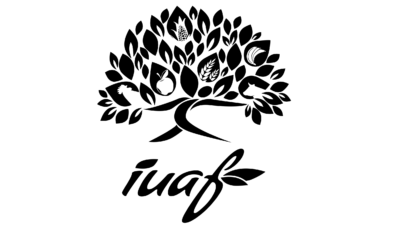Since we modern humans started spreading across the planet, we have killed off the megafauna of every continent but Africa (we evolved there, giving the local wildlife time to become wary of us) and Antarctica (not much megafauna to be had on miles of ice).
Today, we live in a world in which on average, wild species have seen their numbers collapse by 90% and the range they inhabit by 90% too. And those are the lucky ones: across the globe, we precipitated the extinction of thousands of species across dozens of genera in every kingdom of life. The world we inhabit today is but a pale shadow of the one in which we lived a mere 20,000 years ago.
This year marks the start of the UN Decade on Ecosystem Restoration. At an UN meeting next month in Kunming, China, the world will have to recognize that it failed to achieve a single one of the biodiversity targets it set itself 11 years ago in Aichi, Japan. Just like the destruction of the climate, the destruction of the natural world continued unabated.
Few places have been more affected by this radical simplification of nature than Europe. Our continent has been more profoundly transformed by agriculture, urbanization, mining, and industry than any other. And while we are blessed with amnesia – I don’t know many people who cry because they don’t see woolly rhinoceroses in their gardens anymore – we agroforesters are reminded of this disaster whenever we look at an expanse of large, treeless arable fields. Our science shows what we know in our bones: such systems are unlikely to be sustainable, resilient, or friendly to wildlife.
Agroforestry is the effort to reverse that radical simplification in the agricultural sphere. A single tree species in, say, cereal alleys, invites dozens of species of birds, arthropods, reptiles, and others to resume their lives in agricultural landscapes. They will accelerate the biological pump and generate externalities, some negative but many positive, that will help the farm become more resilient, more profitable, and more pleasant to work in.
The devil is of course of the details. And we see him the devil at work right now, in the difficult negotiations about the new CAP, the Common Agricultural Policy, involving the European Commission, the European Parliament and the member states. The European Commission seems to be playing its favourite agroforestry game: praise it to the skies in preliminary documents and studies, and then studiously ignore it when the inevitable pushback from the agrochemical industry and its allies comes.
How else to explain that the Commission barely mentions it in the agriculture strategic plan recommendations it made to member states? Part of it is no doubt due to the general amnesia about the collapse of the natural world that affects us all. If you live in a city and work in a glass tower, as so many decision-makers do, nature is reduced to the flowerpot on your windowsill and to David Attenborough on Netflix.
That amnesia is dangerous. While we cannot be sure about exactly how much destruction our world can take before it stops delivering the essential services required for civilized life – clean air, clean water, fertile soils, relatively stable weather, pest and disease suppression and so much more – we should certainly not assume that we can carry on with our heedless ways.
With the new CAP, the EU’s agricultural policy will be set for the next seven years.
That is why every single one of us now must push, and push hard, to ensure that our national ministries of agriculture understand the importance of agroforestry and encourage its development.
You will find the arguments you need in the set of 10 policy briefs we have prepared. DeepL or Google Translate will rapidly-produce a pretty good local language version for your needs.
And the rest is up to you. To us.
Pick up the phone, send emails, and never take no for an answer!


